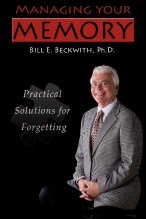Flashbulb Memories
I recall where I was when I heard about the attacks of “9/11.” I was with a client who told me of the events and I recall my disbelief and confusion. I recall the look on her face. I recall what seemed like forever for the reality to actually set in. Finally, I recall my wife’s call and insistence that I cancel a talk that I had in the afternoon.
9/11 and other powerful events bring to mind vivid memories that feel as if they are formed instantly and in great detail. The explosion of the challenger, the OJ Simpson trial, and the assassination of President Kennedy are examples of these intensely felt memories. This type of memory was first described by Roger Brown and James Kulik in 1977 as “flashbulb” memory. These memories are stored and have the feeling as if they are photographs. They feel more vivid, complete, and accurate than do everyday memories.
But ten years after 911, research has clearly indicated that flashbulb memories are not as accurate as they feel unless one was actually at the event. Those in Manhattan at the time of the attacks can recount every sight, sound, and smell. The rest of us are more likely to forget or misremember the details and emotional reactions we had at the time. For example, my wife and were recently discussing the attack and I had forgotten there were four planes rather than two.
As with most long-term memories, flashbulb memories erode over time. They are subject to distortion both of the facts about how we first learned of the events and the actual details of the events. Duke University researchers assessed students’ recall both of 9/11 and of everyday events immediately after the attack. A third of the students was asked to recall both 9/11 and everyday events again a week later, another third after six weeks, and the final third after 32 weeks. Both flashbulb and everyday memories changed in consistency and accuracy over time. However, flashbulb memories felt as if they were more accurate and consistent than regular memories.
Flashbulb memories are not necessarily more accurate but we perceive them to be. Everyday memories are processed through the hippocampus (circuit of short-term memory) which allows new learning of things like names, what we have to do at 3:00 today, or what we did last night. Emotional memories side step this circuit. Strongly emotional events activate the amygdala which labels an event as emotionally important. The events that trigger the amygdala are related to survival (either real or perceived threats) or strong negative (e.g., personal attack or loss) or positive emotions (e.g., falling in love or seeing the Grand Canyon for the first time).
Emotional memories continue to still function in many with progressive dementing disorders. For example, seeing a sad movie sets an emotionally sad tone for the day in nursing home residents whereas viewing an uplifting movie sets a positive tone. However, in both cases the residents have no recollection of having even seen a film and cannot tell you why they are having their feelings. Emotional memory is processed quite differently from factual memory and keeps working well into progressive dementias.




